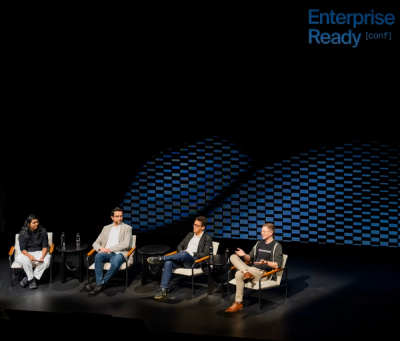
Security News
OWASP 2025 Top 10 Adds Software Supply Chain Failures, Ranked Top Community Concern
OWASP’s 2025 Top 10 introduces Software Supply Chain Failures as a new category, reflecting rising concern over dependency and build system risks.
polysquare-travis-container
Advanced tools
Creates a self-contained package-management installation, without root access.
This allows you to install a pre-defined set of packages to a directory and then execute commands using the packages installed in that directory.
Supports Windows, OS X and Linux.
On Windows and OS X, local versions of chocolatey and brew are installed
respectively, with packages installing to the specified folder. Commands
are executed with environment variables set such that the locally
installed packages will be used by any software built or installed
using the psq-travis-container-exec wrapper. Only the host architecture
is supported.
On Linux, proot is used to "containerize" a downloaded
linux distribution, where the package manage operates only on the directory
in which the downloaded linux distribution exists. This allows you to
install packages using apt-get or yum without touching other
system files. proot allow allows for different architectures to be
specified as well, which are emulated transparently using the
qemu-user-mode tool.
For Linux, an alternative 'local' option is also provided which does not
incur the overhead of proot but is not as flexible. Sadly, on Travis-CI,
proot no longer functions correctly and so the latter mode of operation
is required.
| Travis CI (Ubuntu) | AppVeyor (Windows) | Coverage | PyPI | Licence |
|---|---|---|---|---|
 |  |  |   |  |
64 bit executables cannot be emulated on a 32 bit architecture.
polysquare-travis-container can be installed using using pip from PyPI
Containers can be created with psq-travis-container-create:
usage: psq-travis-container-create [-h] [--distro {Fedora,
Debian,
Ubuntu,
Windows,
OSX}]
[--release RELEASE]
[--arch {ppc,x86_64,x86,arm}]
[--repositories REPOSITORIES]
[--packages PACKAGES]
CONTAINER_DIRECTORY
Create a Travis CI container If an arg is specified in more than one place,
then command-line values override environment variables which override
defaults.
positional arguments:
CONTAINER_DIRECTORY Directory to place container in
optional arguments:
-h, --help show this help message and exit
--distro {Fedora,Debian,Ubuntu,Windows,OSX}
Distribution name to create container of
[env var: CONTAINER_DISTRO]
--release RELEASE Distribution release to create container of
[env var: CONTAINER_RELEASE]
--arch {ppc,x86_64,x86,arm}
Architecture (all architectures other than the
system architecture will be emulated with qemu)
[env var: CONTAINER_ARCH]
--repositories REPOSITORIES
A file containing a list of repositories to add
before installing packages. Special keywords will
control the operation of this file: {release}: The
distribution release (eg, precise) {ubuntu}: Ubuntu
archive URL {launchpad}: Launchpad PPA URL header
(eg, http://ppa.launchpad.net)
--packages PACKAGES A file containing a list of packages to install
The distribution filesystem itself is placed in a subdirectory of
CONTAINER_DIRECTORY, so multiple distribution configurations can be placed in
a single CONTAINER_DIRECTORY. A mini-distribution of proot will also be
placed in CONTAINER_DIRECTORY. This directory should be cached, for instance:
cache:
directories:
- CONTAINER_DIRECTORY
Packages will only be installed if the container is being created and not restored from the cache. To install additional packages, the travis caches should be deleted.
Special directories like /tmp and /home are linked automatically, so you
can run binaries or scripts directly from the project root.
To run a command inside a container, use psq-travis-container-exec:
usage: psq-travis-container-exec [-h] [--distro {Fedora,
Debian,
Ubuntu,
Windows,
OSX}]
[--release RELEASE]
[--arch {ppc,x86_64,x86,arm}] --cmd
[CMD [CMD ...]]
CONTAINER_DIRECTORY
Use a Travis CI container If an arg is specified in more than one place,
then command-line values override environment variables which override
defaults.
positional arguments:
CONTAINER_DIRECTORY Directory to place container in
optional arguments:
-h, --help show this help message and exit
--distro {Fedora,Debian,Ubuntu,Windows,OSX}
Distribution name to create container of
[env var: CONTAINER_DISTRO]
--release RELEASE Distribution release to create container of
[env var: CONTAINER_RELEASE]
--arch {ppc,x86_64,x86,arm}
Architecture (all architectures other than the
system architecture will be emulated with qemu)
[env var: CONTAINER_ARCH]
-- [CMD [CMD ...]] Command to run inside of container
Executables in CMD are resolved relative to the distribution container, so
running bash would run CONTAINER_DIR/bin/bash and not /bin/bash
inside travis.
The --container, --release and --arch options are used to select a
pre-existing distribution container set up with psq-travis-container-create.
FAQs
Polysquare Travis-CI Container Root
We found that polysquare-travis-container demonstrated a healthy version release cadence and project activity because the last version was released less than a year ago. It has 1 open source maintainer collaborating on the project.
Did you know?

Socket for GitHub automatically highlights issues in each pull request and monitors the health of all your open source dependencies. Discover the contents of your packages and block harmful activity before you install or update your dependencies.

Security News
OWASP’s 2025 Top 10 introduces Software Supply Chain Failures as a new category, reflecting rising concern over dependency and build system risks.

Research
/Security News
Socket researchers discovered nine malicious NuGet packages that use time-delayed payloads to crash applications and corrupt industrial control systems.

Security News
Socket CTO Ahmad Nassri discusses why supply chain attacks now target developer machines and what AI means for the future of enterprise security.